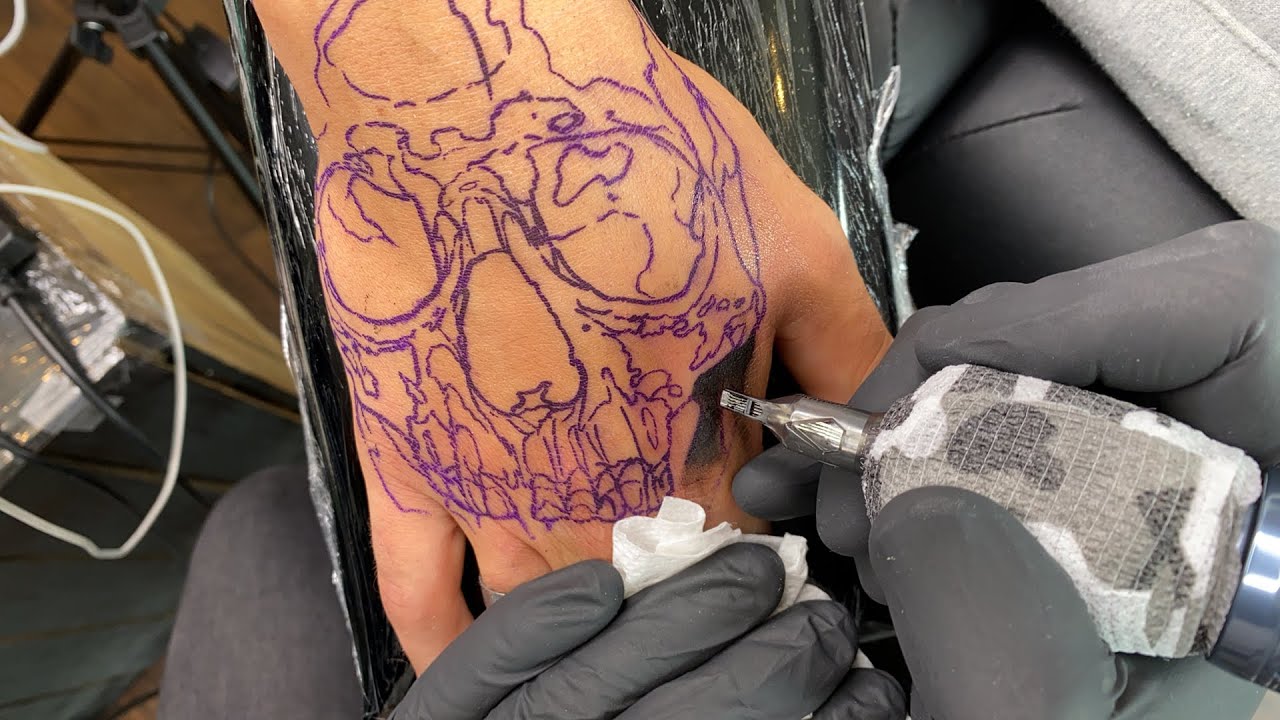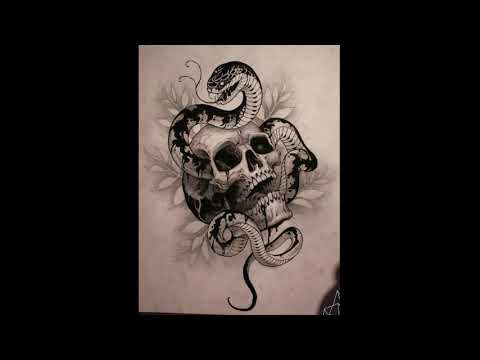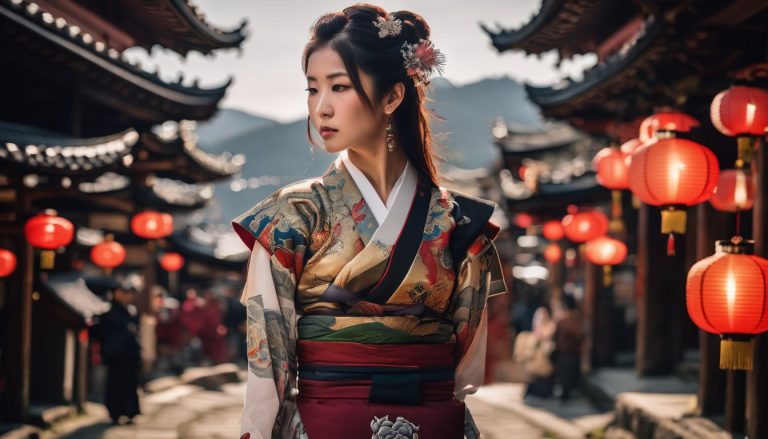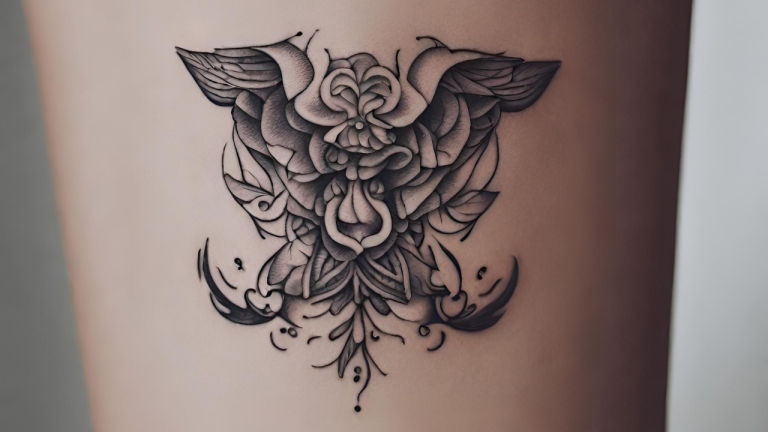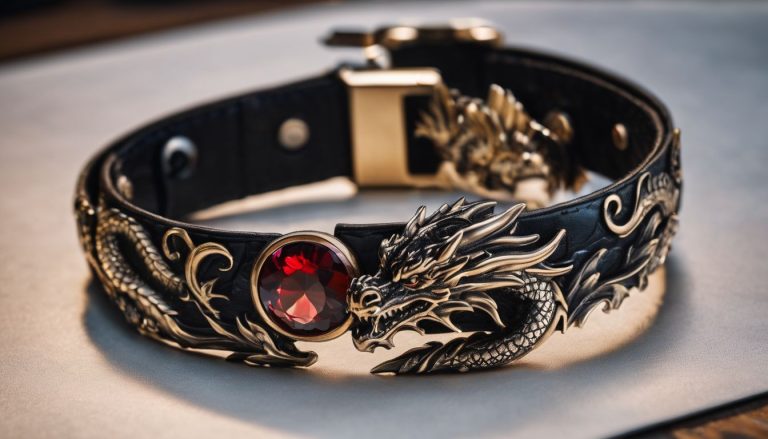The Symbolism and Artistry of Skull Hand Tattoos: Exploring Meanings and Designs
Create your own unique tattoos and art for your home
Choosing a tattoo design is tough, especially when it’s as bold as a skull on your hand. Skulls remind us we’re all mortal and life is fleeting. This blog will unveil the deep meanings behind skull hand tattoos and suggest designs to express your unique story.
Dive into the world of inked skulls!
Key Takeaways
- Skull hand tattoos symbolize mortality, rebirth, and the inevitability of death, often encouraging wearers to confront life with courage and live fully.
- These designs can vary from bold and stark images to colorful representations like sugar skulls which honor loved ones in festive cultural traditions such as Mexico’s Dia de los Muertos.
- The artistry of skull hand tattoos includes intricate details and symbolism that reflect personal beliefs or cultural values signified through various elements like roses for love or snakes for transformation.
- Placement on the hand makes a statement due to its visibility, with the tattoo serving as a constant reminder of the wearer’s resilience against challenges or their acceptance of life’s transient nature.
- Across different cultures from Mexican traditions to Celtic beliefs, skull hand tattoos carry diverse meanings, reflecting themes of ancestral remembrance, spiritual guidance, and life cycles.
The Meaning of Skull Hand Tattoos
Skull hand tattoos carry deep symbolism, representing concepts of death, rebirth, and mortality. They also symbolize bravery and fearlessness while serving as reminders to live life to the fullest.
Additionally, they hold cultural significance in various traditions around the world.
Death, rebirth, and mortality
Skull hand tattoos serve as striking reminders of life’s impermanence and the certainty of death. They make a bold statement about one’s awareness and acceptance of mortality, reflecting a shared human experience that transcends time and culture.
These tattoos often symbolize personal transformation, marking significant moments in an individual’s life where they have faced challenges or emerged from tough times renewed—much like the cycle of rebirth.
For many, these designs also represent hope for what comes after death; suggesting that letting go can lead to new beginnings. The artistry found in skull tattoo imagery captures both the end of one chapter and the potential start of another.
Through their visual impact, these tattoos tell stories of change, serving as permanent testaments to resilience and growth amidst the temporal nature of our existence.
Bravery and fearlessness
Moving from the symbolisms of death and rebirth to exploring bravery and fearlessness in skull hand tattoos, these designs exude an aura of courage and strength. The striking imagery of skulls on the hand serves as a bold declaration of fearlessness in the face of adversity.
Symbolizing the ability to confront one’s own mortality with unwavering bravery, these tattoos embody resilience and a fearless spirit. They often convey the message that individuals are willing to face life’s challenges head-on, unafraid to embrace change or overcome obstacles.
Embracing a skull hand tattoo can showcase an individual’s commitment to living life without fear, radiating strength and determination. These designs represent a profound statement about facing fears head-on, making them popular choices for those seeking body art that embodies courage and tenacity in the face of life’s trials.
Reminders to live life to the fullest
Skull hand tattoos serve as powerful reminders to live life to the fullest, embracing every moment with courage and determination. The symbolism behind these tattoos reflects the idea of seizing opportunities and cherishing life’s beauty.
In various cultures, skull imagery represents the cyclical nature of existence, urging individuals to embrace each day as a gift. With its rich history and deep-rooted meanings, skull hand tattoos inspire individuals to approach life fearlessly and wholeheartedly.
The artistry of skull hand tattoos beautifully encapsulates the ethos of living fully, symbolizing resilience and embracing change while celebrating the vibrancy of existence. These designs not only honor mortality but also remind us to appreciate every breath we take.
Cultural significance
Skull hand tattoos carry cultural significance, with deep roots in various ancient traditions. In Mexican Dia de los Muertos celebrations, the skull symbolizes a joyful remembrance of loved ones who have passed away.
This holiday honors the deceased and is filled with colorful decorations and festivities to honor their lives rather than mourn their deaths. Additionally, Hinduism attributes spiritual meaning to skulls as well – it represents Lord Shiva’s power that triumphs over time and mortality.
The Celtic culture also embraced the symbolism of the skull, seeing it not simply as a representation of death but as an emblem of change and rebirth. These diverse cultural influences have shaped the interpretation of skull hand tattoos into multifaceted symbols that reflect profound beliefs about life, death, transformation, and spirituality across different societies.
The Artistry of Skull Hand Tattoos
Skull hand tattoos often feature bold and striking designs with intricate details that symbolize various aspects of life and death. To learn more about the artistry and symbolism behind these tattoos, keep reading!
Bold and striking designs
Skull hand tattoos often feature bold and striking designs, utilizing thick black lines and intricate details to create eye-catching artwork. These designs typically emphasize the symbolic meaning of the skull, incorporating elements like flowers or geometric patterns to add depth and significance to the overall composition.
The use of contrasting shades and dynamic compositions in these tattoos further accentuates their powerful visual impact.
Artists skillfully employ shading techniques to bring out the depth and dimension of these designs, resulting in a striking appearance on the hand. The choice of placement also contributes to the boldness of these tattoos; prominently displayed on the hand, they serve as an unmistakable statement about mortality, bravery, or cultural significance.
Overall, skull hand tattoos with bold and striking designs encapsulate meaningful symbolism through impressive artistic execution.
Symbolism in the artwork
Skull hand tattoos often feature bold and striking designs that convey strong symbolism. These artworks frequently incorporate intricate details, such as roses or flames, to emphasize the deeper meanings behind the imagery.
The skull, a universal symbol of mortality and rebirth, is often portrayed with vibrant colors or subtle shading to reflect different cultural beliefs and values associated with life and death.
Tattoo artists may use various artistic techniques to represent the duality of life and death through skillful shading and intricate line work. By emphasizing these themes in their artwork, they create visually stunning designs that capture the attention of those seeking meaningful symbolism in their tattoos.
Placement on the hand
Skull hand tattoos are often inked on the top or palm, with designs wrapping around fingers or extending towards the wrist. The placement allows for bold and striking visibility, attracting attention to the intricate artwork.
Some opt for small skull tattoos on finger joints, while others choose larger designs covering the back of the hand. The strategic placement enhances the symbolic meaning and draws focus to themes of mortality, rebirth, and bravery.
When considering a skull hand tattoo, it’s essential to contemplate how its positioning will complement the design’s significance and showcase its artistry. Understanding different placements can inspire meaningful representations that resonate with personal beliefs and values.
Popular Skull Hand Tattoo Designs
From the classic skeleton hand to the vibrant sugar skull, there are various popular designs for skull hand tattoos that hold deep symbolism and artistry. Each design represents different cultural beliefs and artistic expressions, making them a bold and striking choice for body art.
Skeleton hand
Skull hand tattoos are a bold choice, often representing mortality and the cycle of life. The skeleton hand, in particular, symbolizes death and rebirth. With roots in ancient cultures, it can also signify fearlessness and bravery.
This design is a reminder to live life to the fullest, embracing change and overcoming challenges. Skeleton hand tattoos hold various meanings for both men and women, offering artistic interpretations that cater to different beliefs and values.
The symbolism of the skeleton in tattoo culture has evolved over centuries, encompassing themes beyond death to include immortality and the soul. These designs can be personalized to represent new beginnings after difficult times or significant changes in one’s life journey.
Sugar skull
The sugar skull, also known as the calavera, is a popular design in Day of the Dead celebrations. These vibrant and decorative skulls are often adorned with bright colors, intricate patterns, and symbolic elements such as flowers and hearts.
The sugar skull holds deep significance in Mexican culture, representing a joyful remembrance of departed loved ones. Its design embodies the belief that death is a natural part of life and should be celebrated rather than feared.
Sugar skulls are colorful symbols of honoring ancestors and embracing the cycle of life and death.
Intricate details in sugar skull designs include vibrant hues like reds, pinks, blues, yellows, and purples to celebrate the lives of those who have passed on. Flowers symbolize life while other elements like crosses convey spiritual beliefs.
Traditional skull
The traditional skull tattoo design is a classic symbol of mortality and the cycle of life and death. A skull paired with crossbones signifies danger or warning. In various cultures, skulls are seen as positive symbols representing protection, strength, power, overcoming challenges, or standing up to authority.
The intricate detail in traditional skull designs often includes elements like flowers, snakes, or feathers that add layers of meaning to the image.
Moving on from traditional skulls, let’s delve into the vibrant world of Day of the Dead skull tattoos which carry significant cultural symbolism and artistic expression.
Day of the Dead skull
Moving from traditional skull designs to the Day of the Dead skull, this particular motif holds significant cultural importance in Mexican tradition. Known as “calavera” tattoos, these skulls are often adorned with intricate and colorful patterns that symbolize the celebration of life rather than mourning death.
The vibrant designs pay homage to Dia de los Muertos, a holiday honoring deceased loved ones with lively festivities and offerings. These skulls represent not only death but also rebirth and the belief that departed spirits return to celebrate with their families.
The Day of the Dead skull tattoo captures the essence of this rich tradition within its design, incorporating elements like marigold flowers for remembrance, vibrant colors symbolizing joy, and sugar decorations representing sweetness and celebration amidst loss.
Skull with roses
Transitioning from the vibrant and celebratory symbolism of the Day of the Dead skull, we come to another popular design – the skull with roses. The addition of roses in a skull hand tattoo infuses an element of contrast, blending the themes of life and death.
This combination symbolizes love, beauty, and even balance between polar opposites like mortality and fragility. The inclusion of roses adds a softness to the otherwise bold and striking imagery of a skull, signifying hope amidst darkness.
Skull hand tattoos featuring roses also hold significance as reminders to live life fully while acknowledging its ephemeral nature. These designs embody rebirth and transformation by juxtaposing symbols traditionally representing opposite concepts: life blooming from death.
The Significance of Skull Hand Tattoos in Different Cultures
The significance of skull hand tattoos in different cultures varies greatly, from the vibrant and celebratory traditions of Mexican Dia de los Muertos to the religious symbolism found in Hinduism with the god Shiva.
Additionally, Celtic beliefs surrounding life and death also influence the meaning behind these powerful and artistic tattoos.
Mexican Dia de los Muertos traditions
Mexican Dia de los Muertos traditions are deeply rooted in honoring and remembering loved ones who have passed away. During this vibrant celebration, families gather to create altars adorned with marigolds, candles, and sugar skulls to pay homage to their ancestors.
The intricate skull designs used in the Mexican Day of the Dead celebrations symbolize a joyful remembrance of those who have departed, representing a belief that death is not an end but rather a part of the natural cycle of life.
Skull hand tattoos inspired by Mexican Dia de los Muertos traditions often feature colorful and ornate designs, embodying the lively spirit of this cultural event. These tattoos serve as a powerful way to pay tribute to lost loved ones while also embracing the beauty found within mortality.
Hinduism and the god Shiva
Hinduism, an ancient religion practiced primarily in India and Nepal, holds a significant place for the god Shiva. Shiva is often depicted with a third eye on his forehead, which symbolizes insight and wisdom.
In Hindu mythology, Shiva’s connection to death and rebirth aligns with the symbolism of skull hand tattoos as representative of transition and transformation. The concept of destruction leading to creation links back to the meanings associated with skull hand tattoos, emphasizing the cyclical nature of life and death.
Adorned with various symbolic elements such as snakes, tridents, and crescent moons, images of Shiva can inspire intricate designs for skull hand tattoos that embody cultural depth and spiritual significance.
Celtic beliefs of life and death
Celtic beliefs about life and death are deeply intertwined with nature and spirituality. The Celts believed in the cycle of birth, death, and rebirth, emphasizing the interconnectedness of all living things with the natural world.
Their reverence for life’s cyclical nature led to a profound respect for the afterlife and spiritual realms. In Celtic culture, death was seen as a transition to another existence rather than an end.
This belief is reflected in their intricate artwork, including symbols such as the triskele, representing the three stages of life – birth, death, and rebirth.
The Celts also held strong faith in the concept of immortality through ancestral spirits that continued to influence daily life. These beliefs are echoed in modern interpretations of skull hand tattoos drawing inspiration from Celtic iconography.
Conclusion
In conclusion, the symbolism and artistry of skull hand tattoos offer a profound exploration of meanings and designs in tattoo culture. Various interpretations cater to different beliefs and values.
The skull serves as a symbol of death, reminding us of our mortality while also representing rebirth and change. With bold designs and cultural significance, these tattoos stand as powerful symbols that encourage bravery and remind us to live life to the fullest.
FAQs
1. What do skull hand tattoos symbolize?
Skull hand tattoos often convey deep meanings like mortality, rebirth, and protection against death or other symbolic tattoos with individual significance to the wearer.
2. Can I get different designs of skull hand tattoos?
Yes, there are many skull art designs you can choose for a tattoo on your hand—ranging from realistic to abstract imagery that reflects personal style or symbolism.
3. Are skull hand tattoo ideas only for certain people?
No! Anyone interested in expressing themselves through the distinct artwork and symbolism associated with skulls can find inspiring skull hand tattoo images suitable for them.
4. Is there more to a skull hand tattoo than just its looks?
Absolutely! Each design not only showcases unique artistic skill but also carries a story or message through its symbolism; this makes every inked piece truly more than just skin-deep.


